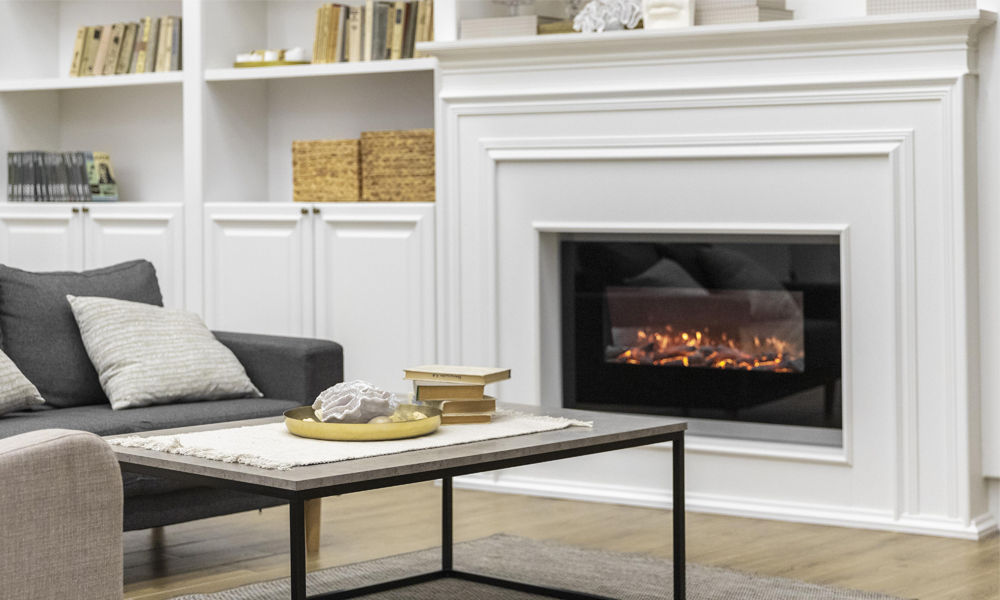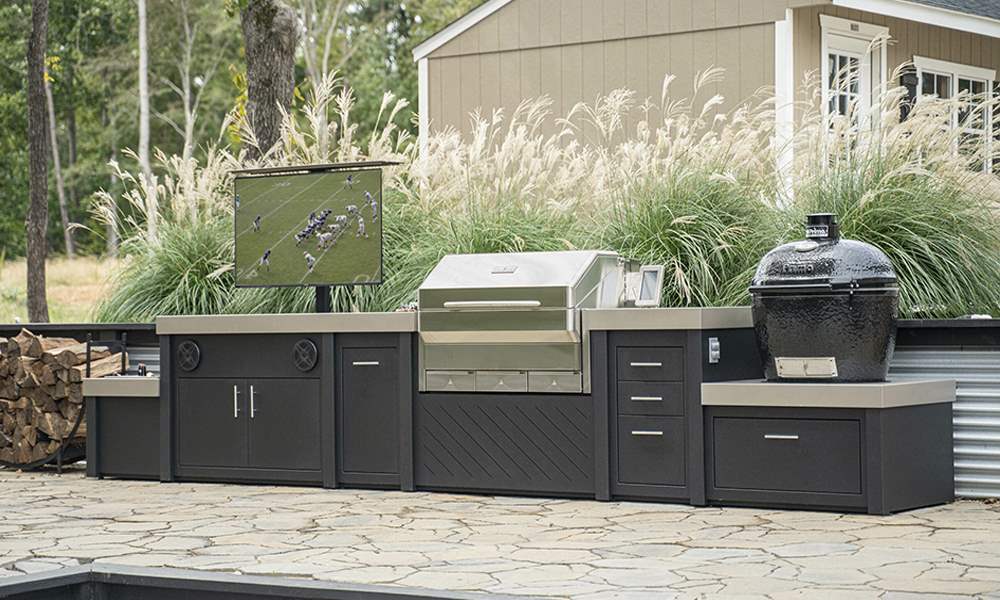
What’s Better? Direct Vent vs Vent-Free Gas Fireplaces?
Gas fireplaces and wood burning fireplaces each have their respective benefits. Deciding which is better for your home depends on what you desire from your fireplace. For example, do you want the fireplace more for the heat? Or for the ambiance? Do you want a quick easy start that involves flipping a switch? Or do you enjoy the satisfaction of starting a fire with wood and matches? If you decide that gas is the way to go, then you will need to choose between two venting options: direct vent or ventless. So, what is the difference between the two?
Direct Vent (or Vented) Gas Fireplaces are the most popular gas fireplace option. A vented fireplace will take air in from the outside for combustion and then exhaust all the gases back to the outdoors. This contrasts with a vent-free gas fireplace, which pulls air in from the inside of the home and then also vents back into the room. Now that sounds worse than it actually is because vent-free fireplaces have a regulator that mixes the gas and air and allows the gas to burn cleanly.
When evaluating direct vent vs. ventless, how do they compare?
The Aesthetic of the Fire:
Direct vent gas fireplaces generally produce a more realistic looking fire. Vent-free fireplaces, in order to minimize the risk of flumes sent into the room, burn at a higher temperature, producing a fire that looks less real. Lower temperature fires look more like a wood burning fire.
Warmth:
With a vented gas fireplace, warm air from inside the fireplace exhausts to the outdoors through a chimney or vent. That chimney or vent is where a lot of heat is lost with a vented fireplace. Combine this with the fact that the fire itself burns cooler and it’s easy to deduce that a vent-free fireplace will provide more warmth. Since warm air is sent back into the home with a vent-free fireplace, the heat is not lost to the outdoors. This makes vent-free gas fireplaces very efficient at heating. That’s not to say that a vented fireplace will not warm an area, it will simply take a little bit longer.
Another factor affects the warmth provided by the two options: Vent-free fireplaces use air from inside the home for combustion. This can result in cold air being pulled into the house from windows and doorways to feed the fire. Direct vent fireplaces use outside air for combustion – this results in less heat loss and allows the room to warm up faster.
Safety and Comfort:
Direct vent fireplaces are generally considered safer due to the fact that the by-products of the fire vent to the outdoors. Ventless fireplaces may decrease the air quality in the home and can present some risk of carbon monoxide and nitrous dioxide production if not ventilated properly. Carbon monoxide production can also be an issue with vented fireplaces if the damper or flue of the fireplace is not open when the fireplace is in use. The fumes must be released to the outdoors for safe use.
There is a chance with ventless fireplaces that the smell of gas and soot will be present in the home. This can be undesirable, especially if you suffer from a respiratory illness, like asthma. Additionally, the release of air vapors back into the house, this can raise the humidity of the home. This can cause condensation on windows and doors, and if it gets too much, mold or mildew could develop.
Flexibility:
Since direct-vent gas fireplaces require a way to exhaust to the outside, such as through a chimney or a vent, the fireplace must be installed in a location where this can happen. There are limitations as to where the direct vent fireplace can be added. A vent-free fireplace does not exhaust to the outdoors; therefore, it can be positioned anywhere.
However, a vent-free gas fireplace has a few restrictions that counter the benefit above. In some parts of the country, ventless fireplaces cannot be installed in a bedroom or bathroom. And they have a minimum clearance to combustibles, such as wood mantles.
Cost and Installation:
Generally speaking, direct vent gas fireplaces are more expensive to install than vent-free. This is due to the necessity of having a chimney or another venting method through an exterior wall. This makes the direct vent fireplace more expensive unless a chimney already exists.
If you would like to learn more about the differences between direct vent and vent-free gas fireplaces, contact us. We can help you evaluate the options and decide what’s best for you. It’s also very important to have gas fireplaces installed and maintained by experienced professionals. Your and your family’s safety are at stake.


